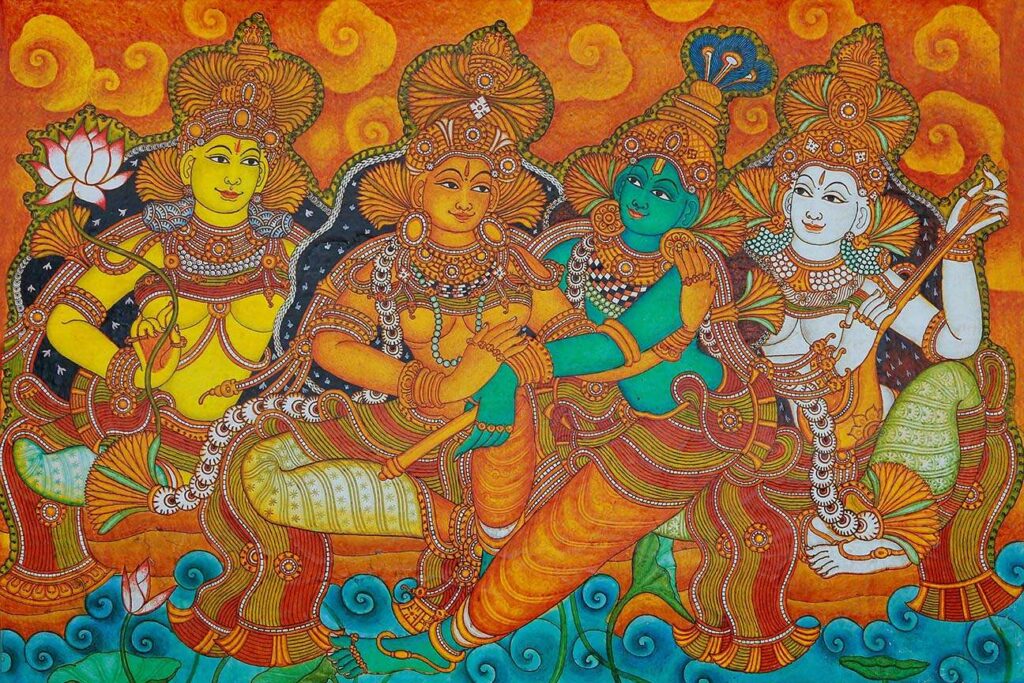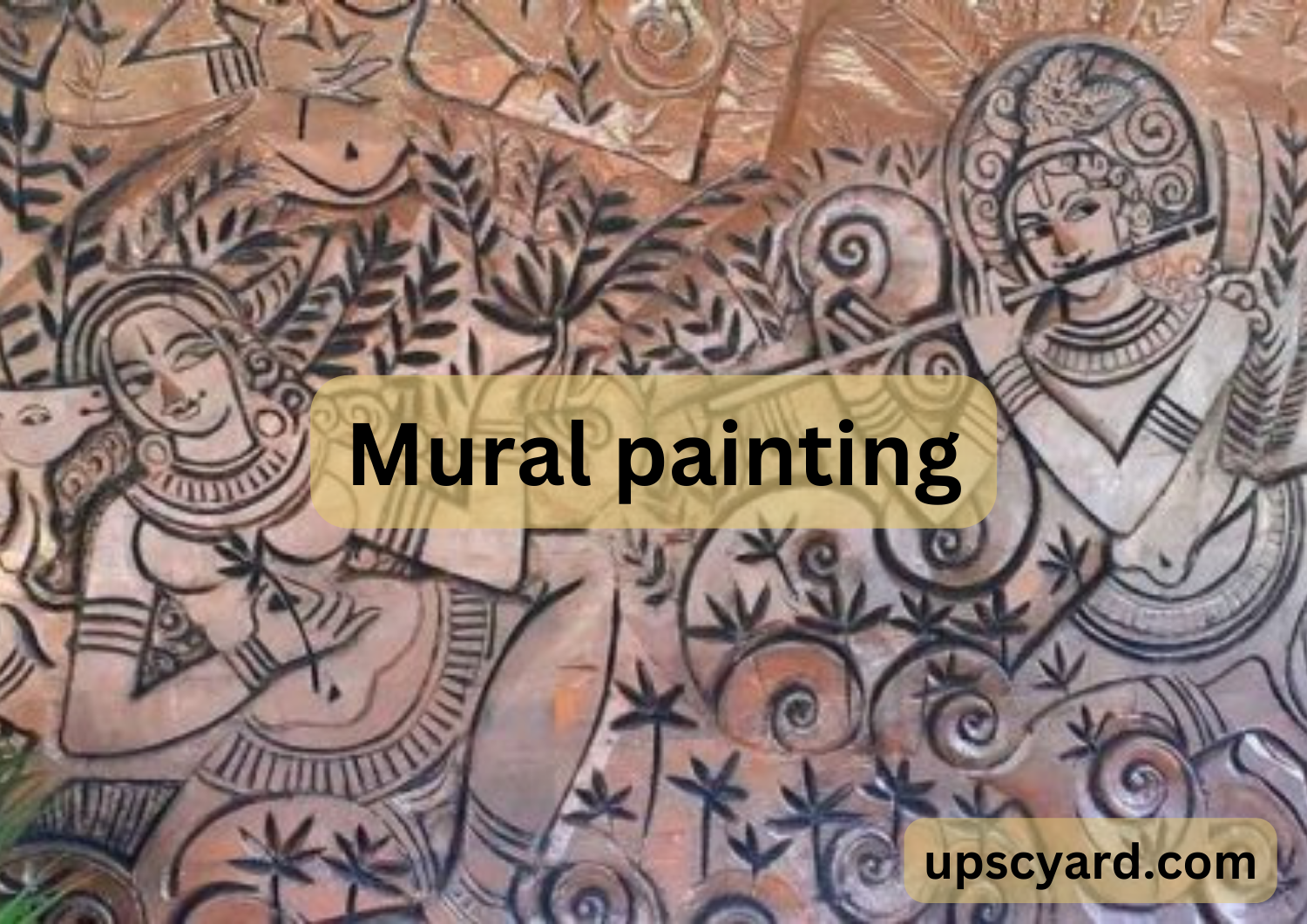Exploring the Rich History of Mural Painting
Ancient Artistry:
Mural painting, a timeless art form, traces its origins to ancient civilizations and has left an indelible mark on human history.
The Origin of “Mural“:
- The term “mural” finds its roots in the Latin word “murus,” meaning wall, reflecting the primary canvas for this form of artistic expression.
- Defined as artwork directly applied onto walls, ceilings, or other expansive surfaces, murals transcend traditional boundaries, adorning flat, concave, or convex structures with their vibrant imagery.
A Journey Through Time:
- The legacy of mural painting can be traced back to the dawn of humanity, with early examples dating back to the emergence of modern humans in Africa around 200,000 BC.
- As human populations migrated across continents, they carried with them the tradition of mural painting, leaving behind a trail of artistic marvels that span from the cave paintings of Lascaux Grotttoes in southern France to the intricate cave art of Bhimbetka in India.
Enduring Expression:
- From ancient cave dwellings to modern urban landscapes, mural painting has served as a powerful medium for storytelling, cultural expression, and commemoration.
- Today, street art murals continue to capture the spirit of our times, reflecting contemporary issues, cultural diversity, and the collective imagination of communities worldwide.
Mural painting stands as a testament to the boundless creativity of humanity, transcending time and space to leave an everlasting impression on the walls of history.
Characteristics of Mural Painting
Mural painting, one of the oldest forms of human artistic expression, has been discovered in ancient cave dwellings worldwide, showcasing the rich history of human creativity. Here are some key characteristics of mural painting:
Capturing Civilization:
- Mural paintings vividly depict the daily lives, rituals, and traditions of various civilizations, offering glimpses into their cultural heritage.
- Scenes range from mundane activities like hunting and gathering to sacred rituals and ceremonies, providing valuable insights into the past.
Artistic Diversity:
- Mural paintings exhibit a diverse range of artistic styles, blending realism with imaginative interpretations to create captivating compositions.
- The use of scale and perspective adds depth and grandeur to the artwork, captivating viewers with its immersive presence.
Emotional Expression:
- Hand gestures and facial expressions in mural paintings convey a wide range of emotions, from joy and celebration to sorrow and contemplation.
- Artists skillfully capture the nuances of human expression, infusing their creations with emotional depth and resonance.
Mural painting stands as a testament to the enduring legacy of human creativity, offering a window into the past and inspiring awe and wonder in present-day audiences.
Exploring the Enigmatic Bagh Caves Paintings

Discovering a Hidden Gem:
Nestled on the banks of the Baghani river in Madhya Pradesh’s Dhar district, the Bagh Caves beckon with their mesmerizing rock-cut formations and ancient artwork.
Unveiling Ancient Treasures:
- These remarkable rock-cut caves are adorned with some of the most breathtaking paintings attributed to ancient civilizations.
- While only five out of the original nine caves have stood the test of time, their walls bear witness to the artistic prowess of bygone eras.
Tracing the Origins:
- Legend has it that Buddhist monk Dataka established these caves during the late 4th to 6th centuries AD, creating a sanctuary for spiritual contemplation and artistic expression.
- The intricate mural paintings adorning the walls and ceilings of the caves are a testament to the rich cultural heritage of the region.
Technique and Tradition:
- The process of creating these masterpieces began with the application of a thick mud plaster in a distinctive brownish-orange hue.
- Following this base, a layer of lime-priming was meticulously applied before the delicate paintings were brought to life using the tempera technique.
- This ancient method, employing colored pigments mixed with a water-soluble binder, ensured the longevity and vibrancy of the artwork for generations to come.
Legacy of Artistry:
- While the Ajanta Caves are renowned for their murals, the Bagh Caves stand as a lesser-known yet equally remarkable testament to ancient mural artistry in India.
- The sophisticated style and intricate detailing found in these paintings offer a glimpse into the cultural and artistic heritage of ancient civilizations, captivating visitors with their timeless allure.
The Bagh Caves paintings serve as a window to the past, inviting us to embark on a journey of discovery through the rich tapestry of India’s artistic legacy.
Exploring the Timeless Beauty of Ajanta Caves Murals

Exploring the Timeless Beauty of Ajanta Caves Murals
A Glimpse into Ancient Artistry:
- Nestled within the volcanic rocks of the Indian subcontinent, the Ajanta Caves stand as a testament to the artistic genius of bygone eras.
- Carved between the 2nd century BC and 5th century AD, these remarkable caves offer a window into India’s rich cultural and architectural heritage.
Unveiling Architectural Marvels:
- Comprising a total of 29 caves arranged in a distinctive horse-shoe shape, the Ajanta Caves beckon visitors with their awe-inspiring grandeur and intricate craftsmanship.
- These Buddhist caves, renowned for their architectural splendor, are revered for their exceptional mural paintings that adorn the inner walls of the caverns.
Journey Through Time:
- The murals found in Cave No. 9 and 10 date back to the illustrious Shunga period, characterized by its distinctive artistic style and cultural significance.
- As visitors venture deeper into the caves, they encounter paintings from the Gupta period, each panel narrating tales of spiritual devotion and cultural vibrancy.
- Among the most recent additions to the Ajanta Caves, Cave No. 1 and 2 showcase the evolving artistic techniques and aesthetic sensibilities of the era, captivating visitors with their timeless allure.
Preserving a Cultural Legacy:
- As custodians of India’s cultural heritage, the Ajanta Caves serve as a living testament to the artistic prowess and spiritual fervor of ancient civilizations.
- Through meticulous conservation efforts, these magnificent murals continue to inspire awe and admiration, offering a glimpse into the rich tapestry of India’s artistic legacy.
Embark on a journey through time and immerse yourself in the captivating beauty of the Ajanta Caves murals, where history comes to life in vibrant hues and intricate brushstrokes.
Kerala mural painting

Exploring the Sacred Artistry of Kerala Murals
A Spiritual Journey:
- Beyond mere depictions of mythological tales, the murals of Kerala embody a deeper spiritual significance rooted in ancient traditions.
- These exquisite artworks draw inspiration from Dhyana Slokas, a sacred text comprising over 2,000 verses that intricately define the essence of nine rasas (emotions) and other divine elements.
Divine Manifestations:
- The iconography of Kerala murals is meticulously crafted to manifest the divine form of deities, serving as a conduit for spiritual devotion and expression.
- Through the intricate brushstrokes and vibrant hues, artists breathe life into the sacred scriptures, bringing forth a visual representation of divine beauty and grace.
Honoring Tradition:
- Guided by the timeless wisdom of classical texts like Shilpa Ratna, Kerala muralists adhere to ancient techniques and aesthetic principles in their artistic endeavors.
- Upholding the legacy of their artistic heritage, painters pay homage to tradition while infusing their creations with contemporary interpretations, ensuring the preservation of Kerala’s rich cultural legacy.
Bridging Past and Present:
- As custodians of Kerala’s cultural heritage, muralists bridge the gap between the past and present, preserving ancient traditions while embracing modern sensibilities.
- Through their masterful craftsmanship and unwavering dedication, these artists continue to enrich the cultural tapestry of Kerala, captivating viewers with the timeless allure of mural artistry.
Embark on a spiritual odyssey through the mesmerizing world of Kerala murals, where ancient scriptures come to life in vibrant colors and intricate symbolism.
Radha Krishna mural painting



M.C.Q. UPSC Prelims
- Q. Consider the following :
1. Lepakshi Temple
2. Ajanta Caves
3. Sanchi Stupa
Mural Paintings observed at which of the above places ?
A. 1 & 2 only
B. 3 only
C. 2 & 3 only
D. 1,2,3 onlyAnswer :– A
- Q. What is mural painting ?
Answer :- Mural painting stands as a testament to the boundless creativity of humanity, transcending time and space to leave an everlasting impression on the walls of history.

